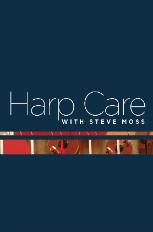 People often ask me if I’ll replace all the strings when they bring their harp in for a regulation. A smaller number of people assume that a regulation includes all new strings and are surprised (and disappointed) to find out that this isn’t the case. While I may replace a string or two at a regulation appointment, and I’ll often replace the bass wires, complete restringing requires a significant additional investment of time, and thus carries an extra labor charge. Then there’s the strings, which on a full sized pedal harp can cost close to $500 for a full set.
People often ask me if I’ll replace all the strings when they bring their harp in for a regulation. A smaller number of people assume that a regulation includes all new strings and are surprised (and disappointed) to find out that this isn’t the case. While I may replace a string or two at a regulation appointment, and I’ll often replace the bass wires, complete restringing requires a significant additional investment of time, and thus carries an extra labor charge. Then there’s the strings, which on a full sized pedal harp can cost close to $500 for a full set.
I am always glad when my customers are willing to invest in new strings. A lot of harpists tend to leave strings on their harps longer than they should. I often work on harps whose strings have lost much of their tonal quality and sustain. I am happy to schedule the additional time to restring a harp before regulating it. However, I can’t offer the same-day service I can offer for a standard regulation. In order to completely restring and regulate a harp, I generally request that the customer leave it with me for three days.
The reason for this time lag is that brand new harp strings don’t hold their tuning well enough for me to accurately regulate the harp’s intonation. Ideally, there should be a two-week lag between the day a harp is restrung and the day it is regulated, and someone should tune the new strings at least once a day.
Since my road service regulation stops rarely last two weeks, I have to compress this “string settling and stretching” period down to a couple of days. I do this by tuning the harp over and over, accelerating the settling process. After two days of intensive tuning, while the strings will still stretch to some degree, they will hold their tuning well enough to complete the pitch regulation process.
If you are interested in having your harp both restrung and regulated, please contact me in advance. We’ll need to work out a time for you to leave the harp with me, and there are decisions to make about which strings to order. You can use strings you already have on hand, but I caution you not to bother with them if they are more than five years old. Strings age even sealed in a package, so if your spare set goes back more than that, it’s better to throw them out and start fresh.


“A lot of harpists tend to leave strings on their harps longer than they should.”
How long should one leave strings on their harps before replacing them?
Thanks!
It depends on how much you play, but a good general guideline is to change the top two octaves and the bass wires every 1-2 years, and the third, fourth, and fifth octaves every 4-5 years.